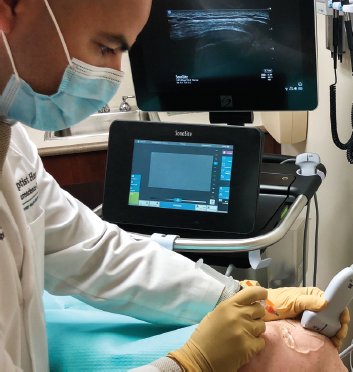Platelet-rich plasma in treatment for sport injury
This is an excerpt from Sports Injuries Guidebook-2nd Edition by Robert S Gotlin.
By Amir Mahajer, DO, FAOCPMR, FAAPMR, and Julia Louisa Iafrate, DO, CAQSM, FAAPMR
Platelet-Rich Plasma
Advances in regenerative treatments include cell-based and plasma-based therapies. The idea of regenerative medicine therapies includes injecting live cells originating from bone marrow or adipose (fat) tissue directly at the site of injury or pathology. These cell lines were thought to have “stem cells” that may proliferate into different tissue types, such as cartilage or tendon in musculoskeletal injuries. This has been found not to be the case. Instead, it's believed that these injections create “intercellular communication” that leads to decreased inflammation, improved function, and even tissue healing (see figure 17.1). Platelet-rich plasma (PRP) is one of these types of therapies that holds promise for healing.

© Amir Mahajer, DO
Platelet-rich plasma is a growing therapeutic modality in treating musculoskeletal disorders and particularly for sports injuries. Multiple studies have demonstrated safety and efficacy for athletes with pain and functional decline. Platelets are known to be an important component of clot formation (i.e., after a cut, the bleeding stops due to the presence of platelets). Over the past years, research has identified other possible actions of platelets. Parts of platelets known as growth factors seem to promote tissue healing.
Multiple different preparations of PRP are currently available, including leukocyte-rich versus leukocyte-poor PRP, and mixtures with higher concentrations of platelets or growth factors. The inclusion of leukocytes in these preparations is still debated due to their possible proinflammatory catabolic effect; however, they have a potential role in improved tissue remodeling and increased concentration of growth factors in cases of chronic tendinopathy. Both single- and multiple-spin PRP preparations are available, but it is unknown whether one technique is more therapeutic than the other. It is postulated that higher concentrations of platelets improve clinical outcomes. Though it makes sense to deliver higher concentrations of the factors to the localized injury site to cause recovery, having too many growth factors and cytokines may cause an imbalance in homeostasis and instead slow healing. Lastly, although PRP cryopreservation is safe and seems to preserve the ability to promote healing, storing platelets in freezing conditions can alter the morphology and decrease functional properties. Thus, fresh PRP continues to be favored at this time.
Currently, many professional and collegiate team physicians are using PRP despite a lack of consensus regarding optimal formulations and timing of treatment. While PRP injections do not seem to improve acute pain or decrease risk of relapses, they do appear to result in earlier return to sport in athletes with muscle strains and certain chronic tendinopathies. Additional research is needed to pinpoint the ideal ratio of platelet preparation methods and identify conditions and injuries that would most benefit from these treatments. A standardization for future biologic research has been proposed to help support the use of PRP or cell-based therapies and further advance the science of regenerative medicine.
More Excerpts From Sports Injuries Guidebook-2nd EditionSHOP

Get the latest insights with regular newsletters, plus periodic product information and special insider offers.
JOIN NOW


